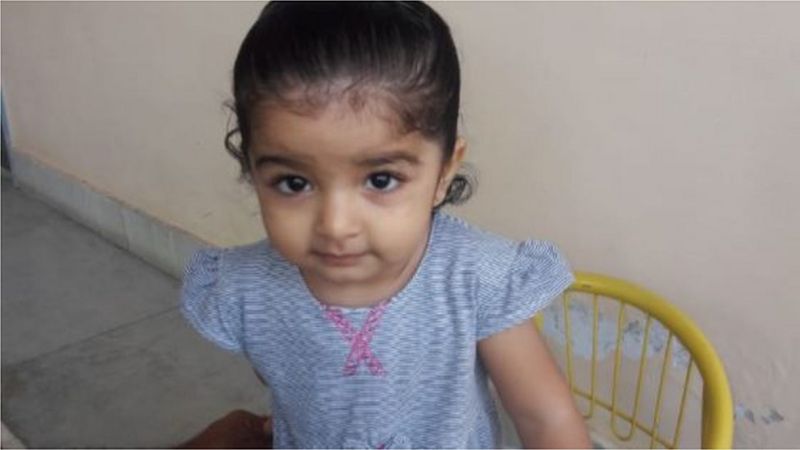The story of India’s first “savior sibling” has made national headlines. It has also raised questions about the ethics of using technology to create a child only to save or cure a sibling in a country with poor regulatory systems. The BBC’s Geeta Pandey in Delhi reported.
Kavya Solanki was born in October 2018 and in March, when she was 18 months old, her bone marrow was extracted and transplanted into Abhijit, her seven-year-old brother.
Abhijit suffered from thalassaemia major, a disorder where his hemoglobin count was dangerously low and he required frequent blood transfusions.
“Every 20-22 days, he needed 350 ml to 400 ml blood. By the age of six, he’d had 80 transfusions,” his father Sahdevsinh Solanki told me on the phone from their home in Ahmedabad, the largest city in the western state of Gujarat.
“Abhijit was born after my first daughter. We were a happy family. He was 10 months old when we learnt that he was thalassaemic. We were devastated. He was weak, his immune system was compromised and he often became ill.
“And when I found out that there was no cure for his illness, my grief doubled,” Mr. Solanki said.
To understand better what ailed his son, he began reading all the literature he could find on the disease, researching possible cures and sought advice from medical experts.
When he heard about bone marrow transplant as being a permanent cure, he began exploring it. But the family’s bone marrow, including Abhijit’s older sister’s, wasn’t a match.
In 2017, he came across an article on “savior siblings” – a baby created for the purpose of donating organs, cells or bone marrow to an older sibling.
His curiosity aroused, he approached Dr Manish Banker, one of India’s best-known fertility specialists, and persuaded him to prepare a thalassaemia-free fetus for Abhijit’s treatment.
Mr. Solanki says they opted for a savior sibling because they ran out of choice. One hospital told him that they had found a bone marrow tissue match in the US. But the cost was prohibitive – between 5 m rupees ($68,000; £52,000) and 10 m rupees – and since it was an unrelated donor, he was told the success rate would be 20-30%.
The technology used for Kavya’s birth is called pre-implantation genetic diagnosis – it allows a disease-causing gene to be eliminated from the embryo and has been used in India for a few years now, but it’s the first time it’s been used to create a savior sibling.
Dr Banker says it took him more than six months to create the embryo, screen it and match it with Abhijit’s. Once they had the perfect match, the fetus was planted in the mother’s womb.
“After Kavya’s birth, we had to wait another 16 to 18 months so that her weight could increase to 10-12 kg. The bone marrow transplant was done in March. Then we waited for a few months to see whether the recipient had accepted the transplant before announcing it,” he told me.
“It’s been seven months since the transplant and Abhijit has not needed another transfusion,” Mr. Solanki told me. “We had his blood sample tested recently, his hemoglobin count is over 11 now. The doctors say he’s cured.”
Dr Deepa Trivedi, who carried out the transplant, told BBC Gujarati’s Arjun Parmar that after the procedure, Kavya’s hemoglobin levels had dipped and there was localized pain for a few days from where the bone marrow was taken, but she’s now fully healed.
“Both Kavya and Abhijit are now completely healthy,” she said.
Mr. Solanki says Kavya’s arrival has transformed their life. “We love her even more than our other children. She’s not just our child, she’s also our family’s savior. We’ll be grateful to her forever.”


